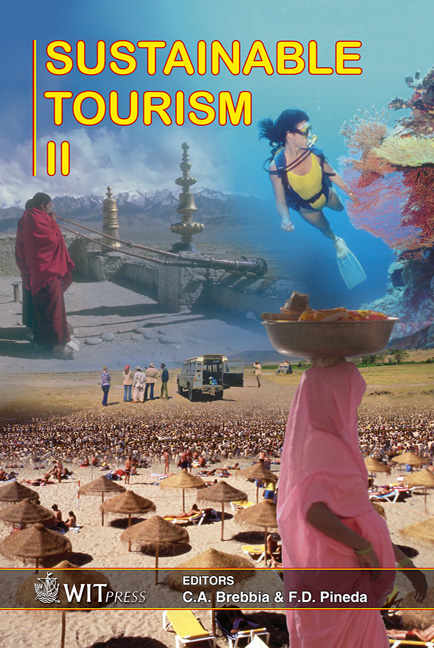Carrying Capacity Assessment For The Greek Islands Of Kalymnos, Kos And Rhodes
Price
Free (open access)
Transaction
Volume
97
Pages
11
Published
2006
Size
578 kb
Paper DOI
10.2495/ST060331
Copyright
WIT Press
Author(s)
B. S. Tselentis, D. G. Prokopiou & M. Toanoglou
Abstract
Carrying capacity assessment has become an indispensable tool for formulating policy and strategies in the tourist industry worldwide. It is well known that Greece depends heavily on the tourist trade, as this has, in recent years, become the main economic activity in many of the Greek islands. The transformation of local economies from primary and secondary production to tertiary has, over the years, substantially altered the business environment in which such an activity takes place. Many studies have shown that the tourist product is a blend of ecological, social and economic sub-systems, operable in the area of interest. For the Greek Islands, environment, both natural and man made, plays a leading role in the sustainable development of the industry. It is the purpose of this paper to apply the principles of carrying capacity assessment to three Greek islands, differing in their tourist development, in an effort to highlight the importance of such a tool in developing long-term sustainable policies for such communities. 1 Introduction The World Tourism Organisation (WTO) proposes the following definition of carrying capacity: \“The maximum number of people that may visit a tourist destination at the same time, without causing destruction to the physical, economic, socio-cultural environment and an unacceptable decrease in the quality of visitors’ satisfaction” [1]. Today, controlling tourist growth has become a central policy issue for the tourist trade [2] and it is noteworthy that carrying capacity assessment has become an important tool for facilitating planning and developing policy in the industry [3].
Keywords





